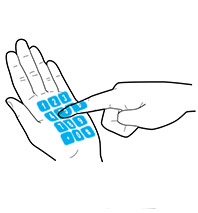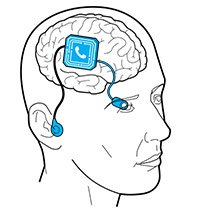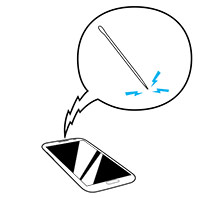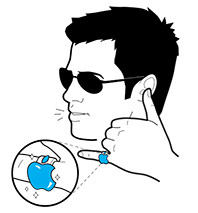
The great smartphone-patent war rages on, as Samsung, loser of the last battle, has now sued Apple, saying the iPhone 5 cribs from its products. Meanwhile, smartphones overall have evolved incrementally since Steve Jobs first demonstrated the thumb swipe in 2007. What might the post-rectangular phone look like? Six forward-thinkers offer some informed speculation.

Michael Okuda
Co-author, The Star Trek Encyclopedia
Noise Stays in the Background
“How useful would it be,” asks Okuda, “to be able to get a clear signal of your voice even if your microphone isn’t close to your mouth or if you’re in a noisy environment?” Short answer: very! He foresees phones with audio-processing software that disambiguates the user’s voice from the cacophony of horns, sirens, bar sound-systems, and yammering bystanders that often intrude on calls.

Chris Harrison
Researcher, Carnegie Mellon University
The World Is the Screen
Harrison, who’s working toward a Ph.D. at his school’s Human-Computer Interaction Institute, believes that we’ll one day carry microprojectors, a quarter the size of the current smartphones, that will beam touch-screens onto any hard surface. “At Starbucks … instead of using the tiny screen, you use the big table in front of you.”

Ray Kurzweil
Inventor and futurist
It’ll Be Like You’re Right There
Kurzweil has delivered “live” lectures to audiences thousands of miles away using a Teleportec 3-D conferencing system to project his life-size holograph. He imagines phones outfitted with similar technology, plus a function to let callers chose virtual venues for chats. “We could appear like we’re sitting on beach chairs along the Mediterranean.… It would be visually and auditorily realistic.”

William Gibson
Author
It’ll All Be in Your Head
Electrocorticographic (EcoG) chips have let research subjects use their minds to move computer cursors. Could implanted smartphones eventually follow? “The equivalent of the iPhone 15 might well consist of a pair of corneal Augmented Reality implants, a pair of cochlear implants for audio, and whatever small wireless thingy links them all to one or another quantum cloud.”

Nicholson Baker
Author
You’ll Actually Sound Like Yourself
Current phones can’t capture the full range of frequencies, a flaw slowly being addressed by a service called HD voice or “wideband.” Says Baker: “The huge, very important difference between today’s cell phones and the iPhone 21 will be—I hope—that human voices will actually sound like human voices and not like compressed, lost, discarnate vocoder beings living in irrigation tubes.”

Andrew Zolli
Executive director, PopTech
We’ll Still Want the Status Symbol
Even in the “iNothing” scenario, where gestures and thoughts replace today’s physical controls, Zolli sees physical phones sticking around for one big reason: “You’re still gonna want to flash a little mobile bling!” Freed from the need for actual telephonic utility, these future gadgets will be able to take on any shape that serves their new purpose as pure fashion accessories.
Have good intel? Send tips to intel@nymag.com.